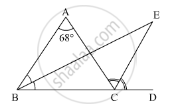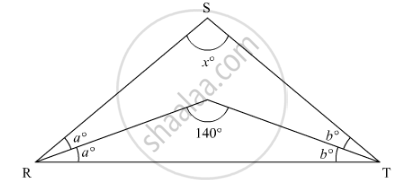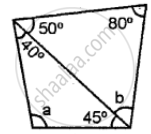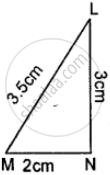Advertisements
Advertisements
Question
In a ΔABC, if ∠A = 55°, ∠B = 40°, find ∠C.
Solution
Given `∠ A=55^@,∠ B=40^@` then ∠ C=?
We know that
In a ABC sum of all angles of triangle is 180°
i.e, ∠ A+∠ B +∠ C =`180^@`
⇒`55^@+40^@` ∠ C `=180^@`
⇒`95^@+∠ C=180^@`
⇒`∠ C=180^@-95^@`
⇒`∠C=85^@`
APPEARS IN
RELATED QUESTIONS
Two angles of a triangle are equal and the third angle is greater than each of those angles
by 30°. Determine all the angles of the triangle.
In the given figure, side BC of ΔABC is produced to point D such that bisectors of ∠ABC and ∠ACD meet at a point E. If ∠BAC = 68°, find ∠BEC.

In ΔRST (See figure), what is the value of x?

Calculate the angles of a triangle if they are in the ratio 4: 5: 6.
In the following, find the marked unknown angle:

Can a triangle together have the following angles?
85°, 95° and 22°
Find x, if the angles of a triangle is:
x°, 2x°, 2x°
Classify the following triangle according to sides:

Match the following:
| Column A | Column B |
| (i) No sides are equal | Isosceles triangle |
| (ii) One right angle | Scalene triangle |
| (iii) One obtuse angle | Right angled triangle |
| (iv) Two sides of equal length | Equilateral triangle |
| (v) All sides are equal | Obtuse angled triangle |
Can we have two acute angles whose sum is a right angle? Why or why not?
